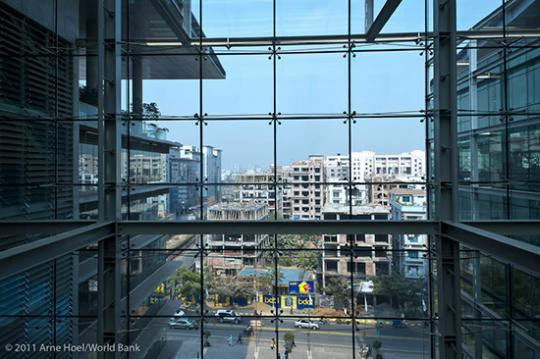Tax revenue growth in Bangladesh this year has been one of the lowest in recent years. There is now demand for a cut in corporate income tax rate with the forthcoming FY15 budget.[1] Is this a good idea from a fiscal point of view?
Whether or not a tax-cut will increase or lower tax revenues depend on the tax rates and the tax system in place. If tax rates are in the prohibitive range, a tax cut will result in increased tax revenues. Arthur Laffer distinguished between the arithmetic effect and the economic effect of tax cuts. The arithmetic effect means that a lowering of the tax rate will result in lower tax revenues by the amount of the decrease in the rate. The economic effect identifies a positive impact of lower tax rates on work, output and employment which expand the tax base. If tax rates that are currently in the prohibitive range are lowered, the economic effect of a tax cut will outweigh the arithmetic effect and revenue collection will increase with tax cut.[2]
Bangladesh taxes companies as independent entities. Historically, the corporate tax rate has been quite high. While the rate has been reduced for all categories during the last decade, they still remain high by international comparison. Currently, corporate tax rate is 27.5% for publicly traded companies (PTC), 37.5% for non-publicly traded companies (NPTC), 42.5% for banks, insurance and financial institutions (BIF), and 45% for mobile phone operators. Corporate tax rate data on 125 countries in 2013 show that only 20 countries had marginal corporate tax rate exceeding 30% and of these only 2 had marginal tax rate exceeding 35%.
The revenue impact of adjusting these rates cannot be ignored in a country where the tax to GDP ratio is one of the lowest in the world. The critical question then is how do the current tax rate ranging between 27.5 to 45% compare with the rate that maximizes corporate income tax revenue collection? Looking at corporate income tax collection data from the National Board of Revenue reveals the following:
- When the corporate tax on PTC was reduced from 40% to 30% and on NPTC from 45% to 35% in FY03, corporate income tax collection grew by 78.5%, compared with 34.4% decline the previous year.
- When the rate on PTC was again reduced from 30% to 27.5% and on NPTC from 40% to 37.5% in FY09, corporate income tax collection grew by 28.1%, compared with 56.4% growth the previous year.
This analysis reveals that the most important correlate of the level of corporate income tax collections is the proxy for the size of corporate activities—nominal GDP, service sector value added or manufacturing value added. A million taka increase in GDP increases corporate income tax collection by Tk 20,000; a million taka increase in nominal service sector value added increases collection by Tk 38,000; and a million taka increase in manufacturing value added increases tax collection by Tk 1,19000.
Among the tax rate variables, the only statistically significant coefficient is the one on PTC whose sign is positive. Depending on the model, a one percentage point increase in PTC rate can increase collection by Tk 5 to 6.3 billion. Note that the PTCs enjoy the lowest 27.5% rate. The coefficients on BIF and NPTC are both negative, but not statistically significant. The reason for the imprecision in these estimates appears to be the lack of sufficient variation in the tax rate data.
The above analysis assumes that the data is stationary. [3] Unfortunately, most of the economic time series is non-stationary. The consequence is called spurious regression problem. A good “ rule of thumb” of identifying incorrect regression results is a high adjusted R-square (coefficient of determination) and a low Durbin–Watson (DW) statistic of autocorrelation. This is true in case of the results reported above—adjusted R-square is close to 0.98 and DW is less than one in all specifications. Taking first difference of the dependent variable is one way of addressing the spurious regression problem. This produces technically better results in that the adjusted R-square decline and DW increases to above 2.
The control variables remain the most significant correlate. The coefficient on PTC remains positive but loses precision. The coefficient on BIF remains negative but now highly significant in all specifications. The coefficient on non-PTC becomes positive and marginally significant.
What can we conclude? On PTC rate, Bangladesh appears to be below the level where revenue is maximized. Reducing PTC rate therefore is likely to reduce revenue collection. The opposite appears to be true for BIF rate. Reducing the BIF from the current 42.5% rate is most likely to increase revenue collection. Nothing conclusive can be said about the NPTC rate because its coefficient could not be precisely measured under any specification.
Photo by Arne Hoel/World Bank




Join the Conversation